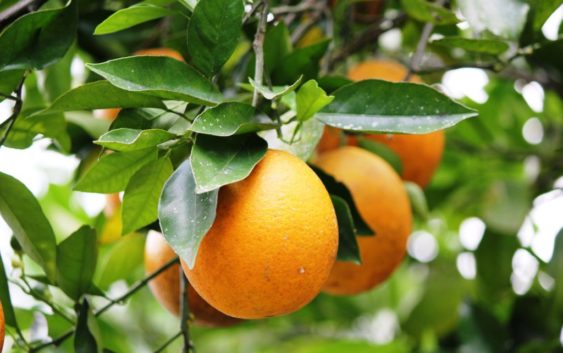- Artists transform hurricane aftermath into hoop-inspired masterpieces at Charlotte exhibit
- NC's cost for Hurricane Helene damage is nearly $60 billion, state says
- State to develop drone program to better respond to disasters like Helene, Florence
- South Carolina residents face deadline to get storm debris out to the curb after Hurricane Helene
- SCDOT to pick up Hurricane Helene debris for a final day in South Carolina
Citrus prices rise after Hurricane Ian, but Texas growers unlikely to reap windfall

Hurricane Ian hit Florida at just the wrong time citrus growers.
Many of the state’s oranges were just about ripe enough to harvest. But the hurricane left Florida farmers with just a fraction of the fruit they expected to bring in.
The drop in supply could affect the price that Texas citrus growers get for their crop. Dale Murden, a citrus farmer in Harlingen and president of Texas Citrus Mutual, spoke to Texas Standard about Ian’s impact.
This transcript has been edited lightly for clarity:
Texas Standard: How does this year’s orange crop look in the Rio Grande Valley? Can you give us a general idea of its condition?
Dale Murden: Yeah, absolutely, and, you know, first and foremost, we understand exactly how Florida feels. We went through that in 2020 with our own hurricane and saw a lot of our fruit on the ground. You know, we had the 2020 hurricane, the ‘21 freeze– droughts, floods, you name it. I think we’ve had the trifecta, the 4-fecta, or whatever you want to call it. We’re fighting back, though. We’ve got about 70% of what we would call an average crop. It’s a great quality. Pretty optimistic going into harvest, which we started about three days ago.
What have you noticed when it comes to how the citrus market has been affected by Hurricane Ian?
Well, it’s like any disaster, you know, one segment of the industry is going to benefit, unfortunately, to the other’s loss. I mean, we’ve seen it time and time again, whether it’s a freeze or a hurricane. So, yeah, the markets are solid right now based on, unfortunately, Florida’s peril.
Does that mean Texas growers will get a higher price for their fruit because of the diminished supply, or were prices already locked in with futures contracts and the like?
You know, some of both – early prices indicate and are looking really good. I think one of the things we’ve got our eye on: Texas is predominantly a fresh fruit industry. About 60%, 65% of what we grow goes into a box and on the shelf; it’s fresh. The rest of it goes to juice. Well, there’s a pretty severe juice shortage right now, so that’s something we’re keeping an eye on.
What about consumer prices? What can consumers expect when it comes to buying citrus or juice going forward here?
Well, unfortunately, if you’re the consumer, it’s like everything else – it’s like gas and, in our case, fertilizer and insecticides, and just on, and on, and on – just everything’s going up.
That makes sense. But I’m curious about whether Hurricane Ian is driving those prices even higher than they normally would be.
It will – and juice, again, for them, because Florida is 90% juice. Fresh is not their big game, but the juice price you’re going to have to keep an eye on.
It may be rather indelicate to talk about a windfall for Texas’ citrus industry, but when you get down to the economics of the situation, does this amount to a kind of windfall for citrus growers?
Can’t say that because our costs have doubled and tripled in some cases, and like I mentioned earlier, we’re still coming back from our own hurricane and freeze, so our production is not back to the levels that we need it. So I can’t say it’s going to be a windfall.
Do you have concerns about the ability to grow citrus in South Texas long-term? I mean, you’re talking about the extreme weather, the fact that that can affect farms for years and years and years, and this extreme weather is obviously affecting what you do.
Yeah, I got into citrus back right when I got out of high school in 1980. You know, first off, citrus is a long-term venture. You plant a tree; it takes you 3 to 5 years to get into production. Our costs to grow citrus right now are well over $3,000 an acre. One of the biggest concerns we have right now in South Texas is this drought, lack of water. We share water down here in the Rio Grande River with Mexico. Our reservoir levels are at about 30% combined, which is down from about 37%, 38% last year. So we’re losing ground in our reservoirs, and moving into next year, that’s a huge concern if you’re a citrus grower. You just got to have water.
Let me ask you a personal question, if you don’t mind. You mentioned that you got into this business when you were really young. Knowing what you know now, would you have gotten into it back then?
I’m probably the worst judge of asking that at all, because you get passionate about something, it gets in you. You do what you do because you love it. It’s not for the faint of heart, because it is a lot. It’s not like planting a cotton crop; you’re in, you’re out. The trees, you know, long term. It’s not for everybody. Absolutely not for everybody.